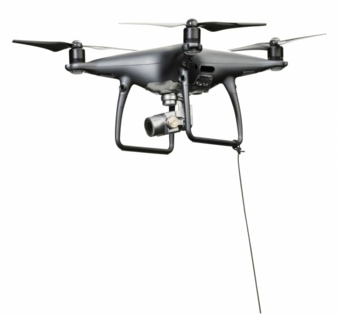16/07/2018 – Seilflechter Tauwerk GmbH — auf Deutsch lesen
Seilflechter Tauwerk GmbH
Gone are the days when drones were used solely for photos and filming.
Nowadays, they are being employed more widely, taking on important tasks on construction sites, in forestry, bridge-building, in the erection of cable cars and mountain railways and in shipbuilding. For example, drones can be deployed to run ropes for cable cars or rope bridges across distances of 500 or 1000 metres by transporting thin, preliminary ropes to the target point. The thick cables are then affixed to them and mounted accordingly – and that’s all there is to it! Drones are increasingly replacing the expensive and logistically complex use of helicopters, offering benefits such as flexibility and manoeuvrability. Similarly, drones can create a quick and easy link between two ships out at sea.
Seilflechter Tauwerk GmbH has developed a new range of high-strength Novoleen ropes with twelves strands and no core, specifically for drones. “Rope lengths up to 2000 metres are possible,” states Seilflechter‘s Managing Director Andreas Halle, continuing, “The Novoleen ropes are around 14 times lighter than a wire rope of the same thickness; they have a special coating and are great for splicing. They are thermally pre-stretched and can be coated again after exposure to extreme applications.” The special ropes are available in diameters of 1.3mm to 4mm and with a break load of 220 to 1400 dan. With a diameter of 1.3 mm, the rope’s weight per 100 metres amounts to just 0.2kg; the 4mm rope weighs 0.73kg per 100 metres. Seilflechter supplies its products with the year labelled on the rope as well as a factory and testing certificate on request.




